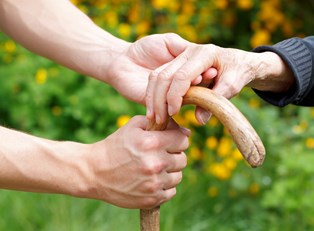Lewy body dementia (LBD) is a form of progressive dementia. LBD is second only to Alzheimer’s disease in degenerative neurological disorders, affecting approximately 1.4 million people according to the Lewy Body Dementia Association (LBDA). Unfortunately, is it wildly underdiagnosed because of its commonality with more well-known disorders, particularly Parkinson’s disease and Alzheimer’s. Here’s a look at Lewy body dementia, its causes, symptoms, and treatment.
Understanding Lewy Body Dementia
Although some experts state that Lewy body dementia and dementia with Lewy bodies are identical diseases, other sources, such as the LBDA report that LBD is “an umbrella term for two related diagnoses. LBD refers to both Parkinson’s disease dementia and dementia with Lewy bodies.”
Lewy bodies, so named for the scientist researching Parkinson’s that discovered them, are deposits of protein. They form throughout the brain, particularly in the brainstem and cerebral cortex, inhibiting motor control, memory, and cognition. Furthermore, they interfere with the production of the neurotransmitters dopamine and acetylcholine. So, while Lewy bodies occur in the brainstems of Parkinson’s patients, the additional spreading of Lewy bodies “dementia with Lewy bodies” is what sets LBD apart from Parkinson’s and Alzheimer’s, creating a separate degenerative disease with aspects of both.
Causes of Lewy Body Dementia
As with many degenerative diseases, the exact cause of Lewy body dementia is unknown -- beyond that it has much to do with the build up of Lewy bodies. Many factors appear to play a role in this. LBD tends to appear in males more frequently than females. Patients also tend to be over the age of 60. One study suggested that, although the likelihood of developing Parkinson’s disease eventually declines again after around 85 years old, the development of LBD continues to increase in likelihood with the years. There may be a genetic link to Lewy body dementia, although there is still minimal data in many regards, particularly because of the underdiagnosis of LBD.
Symptoms of Lewy Body Dementia
In addition to its other symptoms, Lewy body dementia is characterized by parkinsonian symptoms. Patients may exhibit tremors, difficulty walking, rigid muscles, and may begin to move more slowly than originally. As Lewy bodies build up in the parts of the brain responsible for the autonomic nervous system, the unconscious systems of the body fail to regulate themselves efficiently. Patients become dizzy and may faint or fall. Sleep may be interrupted, and patients with LBD often suffer from REM sleep disorder, in which the individual acts out what is happening in dreams. Extreme fatigue may be present during the day; LBD patients may also take long naps or have difficulty maintaining attention with a tendency to zone out.
Symptoms of dementia, much like those of Alzheimer’s disease, are common; patients often experience cognitive dysfunctions such as memory loss, difficulty with visual-spatial abilities, and confusion. Perhaps one of the more defining symptoms of Lewy body dementia is the hallucinatory effect of the disease. Recurring hallucinations tend to be one of the initiating symptoms of LBD. In addition to visual hallucinations, patients may experience olfactory, auditory, or tactile hallucinations, affecting all the senses except for taste.
Treatments for Lewy Body Dementia
According to the LBDA, Lewy body dementia requires a complete team of doctors for comprehensive treatment. Because there is no cure, the goal of managing LBD is to control symptoms as much as possible to extend quality of life. Initially, therapies not involving medication may be helpful. Learning to deal with initial hallucinations may be preferable to appropriate medications.
Finding a caregiver who understands the specific needs of a patient with LBD is paramount to treatment. They can help by being supportive and reassuring, rather than trying to force cognitive improvement, along with keeping the environment free of distractions and easy to navigate. Additionally, it can be soothing to institute a daily routine that focuses on simplicity.
As the disease advances, the need for medication may be unavoidable. Cholinesterase inhibitors used for Alzheimer’s disease are often prescribed for the cognitive symptoms that present. For the Parkinsonian movement symptoms, medications specific to Parkinson’s disease, such as carbidopa-levodopa, may be useful, but they may also make cognitive symptoms much worse.



